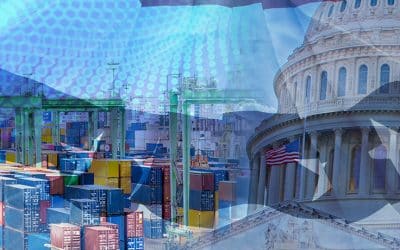What does the uncertainty around Trump's economic policy mean for the U.S.A. in 2025?

Redacción Mapfre
Whether through the withdrawal from the World Health Organization (WHO), the exit from the Paris climate agreements, or the redefinition of U.S. participation in NATO, the change in tune is becoming evident under Trump's leadership and his particular vision of the world.
Despite all the uncertainty brought by President Donald Trump, MAPFRE Economics, the MAPFRE’s Research Arm, estimates U.S. GDP growth of 2.5% in 2025 and 2% for next year. Inflation will likely close this year at 2.9% and next at 2.6%. Rising prices are one of the main risks for the U.S. economy in the short term, due to the possibility of increased interest rates and the cost of government funding.
MAPFRE Economics also highlights the fiscal deficit, which closed 2024 at 6.9% of GDP and is expected to remain at 6.5% this year. This trajectory, which “seems unsustainable,” could be behind the recent upturns in debt yields, although the Federal Reserve is lowering interest rates.
“In the United States, 10-year bond yield has recently exceeded 4.5%, a level not seen in more than a decade. This means that the government will have to refinance part of its existing debt at higher interest rates, significantly increasing annual debt service costs. This scenario puts greater pressure on the fiscal deficit, which already hovers around 7% of GDP,” highlighted MAPFRE Economic Research in the report ‘Economic and Industry Outlook 2025.’
Although this deficit level is alarming, the new administration has made it clear that it does not intend to increase direct taxes on taxpayers. Instead, it has proposed generating additional revenue through the imposition of tariffs on imports. The dominant instrument still appears to be the imposition of tariffs as a coercive mechanism and the transactional basis for agreements—a proposal that comes as little surprise given the precedents set during Trump’s previous term in 2016. However, it highlights that the art of negotiation will be the central axis of relations with countries that contribute most to the U.S. trade deficit or show the least political alignment.
Among the countries most exposed to this rhetoric are China (with the 10% tariff already established), Mexico and Canada (with the 25% tariff proposed and paused until March), and the European Union (not yet defined). Among the most evident key risks arising from this approach to trade are, clearly, slower economic growth and less controllable inflation, at least in the aggregate.
With regard to immigration policy, everything points to the objective of protecting the local workforce, maintaining deportation policies, and offsetting the negative effects on productivity through drivers such as artificial intelligence (AI), the return of local manufacturing, investment in key industries, and deregulation. In prospective, economic theory suggests that the effects could translate into greater potential growth for the economy in the short term, but it would also involve higher prices, a conjugation that would lead to a higher neutral interest rate. However, with the focus on the short-term, and without a clear vision of the time or scale of these measures, the most immediate effects would result in a stimulus to production on the supply side, an increase in consumption, and additional pressure on prices, justifying the current caution stance of the Federal Reserve.
With regard to fiscal policy, there is a general consensus that the tax cuts enacted during his first term will extend over time, and that their impact will be partially offset by tariffs on external balance sheets. However, it is possible that part of these benefits will once again be directed toward spending on imported products, making their effects ambiguous. As a result, this instrument can be as variable as trade policy itself. In this sense, it can once again be inferred that the outcome of this policy would likely be a combination of increased short-term economic activity and higher prices, with the drawback of a fiscal deficit subject to higher interest rates.
Regarding energy policy, the declaration of an energy emergency to unblock industry expansionary plans, increase supply, and boost exports of its surplus would be beneficial in terms of prices. However, some of these benefits could be canceled by dismantling the industrial policies of the Biden era and redirecting investment to a sector that, according to estimates by the International Energy Agency (IEA), could lead to oversupply.
Finally, the United States’ expansive defense plans stand out, including demands for NATO allies to increase their defense spending to 5% of GDP. This would translate into a boost in U.S. production, aid in correcting trade deficits, heightened competition with its rivals, and greater shared responsibility among member states in security efforts. This instrument would be a net positive boost for the U.S. economy and would be difficult to elude by other partners, even more so when considering global geopolitical trends



